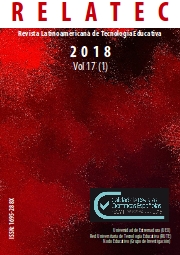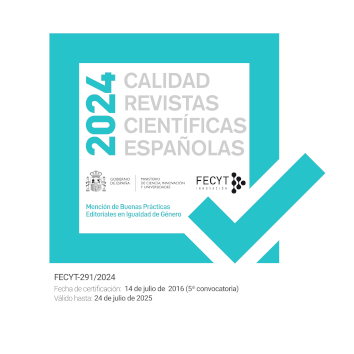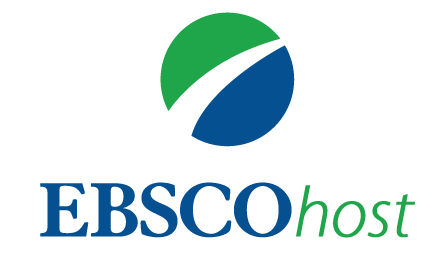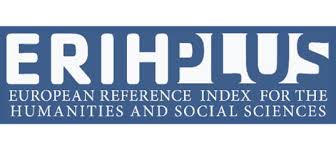Personal learning environments (PLE) in university students of pedagogy
DOI:
https://doi.org/10.17398/1695-288X.17.1.25Keywords:
Education technology, teacher training, initial training, education, PLEAbstract
The study of personal learning environments (PLE) has great relevance because they are a reflection of the learning strategies that students use with technology, in addition, they are seen as a valuable methodological tool for teaching work. The present investigation of type "expost-facto" and descriptive, analyzes graphical representations of the PLE of 415 students who study the subject "Competencies Tic for the academic life", the first semester of 2016 in the University of Playa Ancha. A detailed description of the tools used by the students is made and the Marascuilo nonparametric test is applied to find differences between faculties. The results show a large list of applications used by students in different devices, however, the study shows that only some are used in a massive way and that students are more consumers than information producers. The comparison between the faculties involved shows differences of use in some general applications and other specific applications. The results show that the PLE study allows to project future academic actions and shows the need to carry out other similar investigations but that consider a classification of applications that reflects the six categories of Bloom for the digital era (remember, understand, apply, analyze , evaluate and create) .
Downloads
References
Anderson, L. W. y Krathwohl, D. R. (2001). A taxonomy for learning, teaching, and assessing: A revision of Bloom’s taxonomy of educational objectives. New York: Longman. Recuperado a partir de https://doi.org/10.1207/s15430421tip4104_2
Attwell, G. (2007, jan). Personal Learning Environments - the future of eLearning ? eLearning Papers 2,1-8. https://doi.org/10.1080/19415257.2011.643130
Banks, M. (2010). Los datos visuales en investigación cualitativa. Recuperado a partir de http://site.ebrary.com/lib/interpuertoricosp/Doc?id=10832097
Banks, M. (2010). Los datos visuales en investigación cualitativa. Madrid: Morata.
Becerra, M. T. y Gutiérrez, P. (2016). Necesidades formativas del alumnado universitario a partir del análisis de sus Entornos Personales de Aprendizaje. Revista Interuniversitaria de Investigación en Tecnología Educativa, (1). https://doi.org/10.6018/riite/2016/271971
Cabero, J. (2013). El aprendizaje autorregulado como marco teórico para la aplicación educativa de las comunidades virtuales y los entornos personales de aprendizaje. TESI, 14(2), 133–156. Recuperado de http://www.redalyc.org/pdf/2010/201028055006.pdf
Cabero, J. (2014). Los entornos personales de aprendizaje (PLE). Antequera: IC Editorial.
Cabero, J., Barroso, J., & Romero, R. (2015). Aprendizaje a través de un entorno personal de aprendizaje (PLE). Learning based on a Personal Learning Environment (PLE). Bordón, 67(2), 63–83. https://doi.org/10.13042/Bordon.2015.67205
Cabero, J., Marín, V., & Infante, A. (2011). Creación de un entorno personal para el aprendizaje: desarrollo de una experiencia. Edutec. Revista Electrónica de Tecnología Educativa, (38). https://doi.org/10.21556/EDUTEC.2011.38.380
Cabero, J., & Vázquez, A. (2014). Production and evaluation of a Personal Learning Environment for faculty training: analysis of an experience / Producción y evaluación de un Entorno Personal de Aprendizaje para la formación universitaria: análisis de una experiencia. Cultura y Educación, 26(4), 631–659. https://doi.org/10.1080/11356405.2014.985944
Churches, A. (2009). Taxonomía de Bloom para la era digital. Eduteka, 1–12. Recuperado a partir de http://www.eduteka.org/TaxonomiaBloomDigital.php
Dabbagh, N. y Fake, H. (2017). College Students’ Perceptions of Personal Learning Environments Through the Lens of Digital Tools, Processes and Spaces. Journal of New Approaches in Educational Research, 6(1), 28–36. https://doi.org/10.7821/naer.2017.1.215
Durall, E., Gros, B., Maina, M., Johnson, L. y Adams, S. (2012). Perspectivas tecnológicas: educación superior en Iberoamérica 2012-2017. Austin, Texas. Recuperado a partir de http://www.nmc.org/pdf/2012-technology-outlook-iberoamerica_SP.pdf
Infante, A., Gallego, O. y Sánchez, A. (2013). Los gadgets en las plataformas de telefomación: el caso del proyecto Dipro 2.0. Píxel-Bit, Revista de Medios Y Educación, (42), 183–194. https://doi.org/10.12795/PIXELBIT
Johnson, L., Smith, R., Willis, H., Levine, A. y Haywood, K. (2011). The 2011 Horizon Report (Vol. 2). Austin, Texas: The New Media Consortium. Recuperado a partir de http://www.nmc.org/pdf/2011-Horizon-Report.pdf
Johnson, M. W., Prescott, D. y Lyon, S. (2017). Learning in Online Continuing Professional Development: An Institutionalist View on the Personal Learning Environment. Journal of New Approaches in Educational Research, 6(1), 20–27. https://doi.org/10.7821/naer.2017.1.189
Kuhn, C. (2017). Are Students Ready to (re)-Design their Personal Learning Environment? The Case of the E-Dynamic.Space. Journal of New Approaches in Educational Research, 6(1), 11–19. https://doi.org/10.7821/naer.2017.1.185
Llorente, M. del C. (2013). Aprendizaje autorregulado y PLE PLE and Self-regulated learning. Edmetic, Revista de Educación Mediática Y TIC, 2(1), 58–75. Recuperado a partir de https://goo.gl/mGZrog
Marascuilo, L. A. y McSweeney, M. (1967). Nonparametric post hoc comparisons for trend. Psychological Bulletin, 67(6), 401–12. Recuperado a partir de http://www.ncbi.nlm.nih.gov/pubmed/6046734
Marín-Díaz, V. (2014). Training Future Teachers through Virtual Platforms Dipro 2.0 Experience. Indian Journal of Applied Research X, 167(1), 2249–555. Recuperado a partir de https://goo.gl/MiTGvU
Mateo, J. (2004). La investigación ex-post-facto. In R. Bisquerra (Ed.), Metodología de la investigación educativa. (pp. 195–230). Madrid, España: La Muralla.
Prendes, P. y Castañeda, L. (2013). PLE-Centered Education: The Next Boundary. | Lindenwood University. Journal of Educational Leadership in Action, 2(1). Recuperado a partir de https://goo.gl/7wCfVb
Tecnológico de Monterrey. (2015). Radar de Innovación educativa 2015. Monterrey: Tecnológico de Monterrey.
Tecnológico de Monterrey. (2016). Radar de Tecnología Educativa de preparatoria 2016. Monterrey: Tecnológico de Monterrey.
Tourón, J. (2017). Taxonomía de Bloom, ¿hablamos? Retrieved February 14, 2017, from https://ined21.com/metas-reales-de-aprendizaje-taxonomia-de-bloom/
Vázquez-Cano, E., Martín-Monje, E. y Larreta-Azelain, M. D. de C. (2016). Analysis of PLEs’ implementation under OER design as a productive teaching-learning strategy in Higher Education. A case study at Universidad Nacional de Educación a Distancia. Digital Education Review, (29), 62–85. Recuperado a partir de http://revistes.ub.edu/index.php/der/article/view/15443
Wilson, S. (2008). Patterns of Personal Learning Environments. Interactive Learning Environments, 16(1), 17–34. https://doi.org/10.1080/10494820701772660
Downloads
Published
Issue
Section
License
Authors who publish in this journal accept the following conditions:
1. The Author retains copyright in the article. Upon acceptance of the article, the author shall grant to the Publisher the right of first publication of the article. with the dcoument registered with the Creative Commons Attribution-NonCommercial-NoDerivative 4.0 International (CC BY-NC-ND) license, which allows to third parties to use what is published whenever they mention the authorship of the work and the first publication in this journal.
2. Authors can make other independent and additional contractual agreements for the non-exclusive distribution of the article published in this journal (eg, include it in an institutional repository or publish it in a book) provided they clearly indicate that the work was published for the first time in this journal.
3. Authors are allowed and recommended to publish their work on the Internet (for example on institutional or personal pages) before and during the review and publication process, as it can lead to productive exchanges and a greater and faster diffusion of published work (see The Effect of Open Access).









